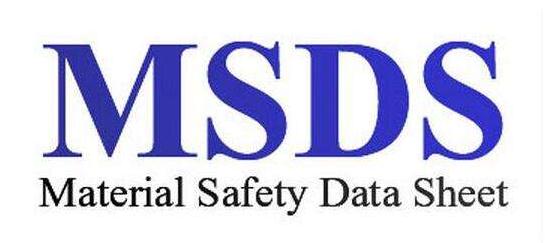
MSDS classification category
United Nations' Model Regulations on the Transport of Dangerous Goods (Revised 19th Edition, 2015) (referred to as the 'Model Regulations')
According to the danger or main danger of dangerous goods, they are divided into 9 categories, as follows:
Category 1: Explosives
Category 2: Gas
Category 3: Flammable liquids
Category 4: Flammable solids, substances that are prone to spontaneous combustion, and substances that emit flammable gases when exposed to water
Category 5: Oxidizing substances and organic peroxides
Category 6: Toxic and infectious substances
Category 7: Radioactive substances
Category 8: Corrosive substances
Category 9: Miscellaneous hazardous substances and items, including environmentally hazardous substances
Note: The order of category and item numbers is not the order of degree of danger.
What key information does it take to learn and master to distinguish each hazard category?
(Class 1, Class 2, and Class 7 hazard categories are not common, let's take a look at other common hazard categories.)
Category 3: Flammable liquids
The main criterion for distinguishing whether a liquid is flammable is its flash point (closed loop). When the flash point is ≤ 60 ° C and the boiling point is>35 "C, the liquid is considered flammable.
Table 1 Hazard Categories by Flammability

Category 4: Flammable solids, substances that are prone to spontaneous combustion, and substances that emit flammable gases when exposed to water
Identifying whether it is a Class 4 hazardous material requires corresponding experimental data. If there is no data, intuitive judgment cannot be made.
Category 5: Oxidizing substances and organic peroxides
This item of goods refers to substances that are in a highly oxidizing state, have strong oxidizing properties, are prone to decomposition and release oxygen and hot stars. This includes organic compounds containing peroxide groups, which may not necessarily be flammable themselves, but can cause combustion of combustible materials. They can form explosive mixtures with soft powdered combustible materials and are sensitive to heat, vibration, or friction.
Category 6: Toxic and infectious substances
The determination of whether the first toxic substance is a toxic substance requires a median lethal dose, such as acute toxicity (oral) LD50, acute toxicity (dermal) LD50, and acute toxicity (inhalation) LC50 data.
Table 2 Packaging categories for oral intake, dermal contact, and inhalation of dust or delays

The second infectious item refers to substances containing pathogenic microorganisms that can cause illness or even death.
Category 8: Corrosive substances
Corrosive substances refer to substances (acidic, alkaline, and other corrosive substances) that cause serious damage to biological tissues when in contact with them through chemical reactions, or that can seriously damage or even destroy other goods or means of transportation in the event of leakage.
This category includes substances that meet one of the following conditions:
1) Substances that cause full thickness damage to intact skin tissue during the 14 day observation period after exposure for more than 60 minutes but not more than 4 hours;
2) Substances that have been determined not to cause full thickness damage to intact skin tissue, but have a surface corrosion rate exceeding 6.25mm/a on steel or aluminum at a test temperature of 55 ° C.
Generally, acids with pH ≤ 2 or bases with pH ≥ 11.5 can be classified as corrosive substances. Substances that corrode metals require specific experimental data to determine whether they are corrosive substances.
Category 9: Miscellaneous hazardous substances and items, including environmentally hazardous substances
1. This category refers to substances and items that are hazardous but cannot meet the definition of other categories, including:
1) Inhalation of substances that can be harmful to health with fine dust, such as UN 2212 and UN 2590;
2) Substances that can emit flammable gases, such as UN 2211 and UN 3314;
3) Lithium battery pack, such as UN 3090, UN3091, UN 3480, UN 3481;
4) Lifesaving equipment, such as UN 2990, UN3072, UN 3268;
5) Substances and items that can form dioxins in the event of a disaster, such as UN 2315, UN 3432, UN 3151, UN3152;
6) Substances transported or submitted for transportation at high temperatures refer to substances transported under conditions where the liquid temperature reaches or exceeds 100 ° C or the solid temperature reaches or exceeds 240 ° C, such as UN 3257 and UN 3258;
7) Hazardous substances to the environment, including liquid or solid substances that pollute the aquatic environment, as well as mixtures of such substances (such as formulations and waste), such as UN 3077 and UN 3082;
8) Genetically modified microorganisms and organisms that do not meet the definition of toxic substances in item 6.1 or infectious substances in item 6.2, such as UN3245;
9) Others, such as UN 1841, UN 1845, UN 1931, UN 1941, UN 1990, UN 2071, UN 2216, UN 2807 UN 2969, UN 3166, UN3171, UN 3316, UN 3334, UN3335, UN 3359, UN3363.
2. Classification of Substances Hazardous to the Aquatic Environment
The classification of aquatic environmental hazards is a common classification of Class 9 hazardous materials. To determine this classification, it is necessary to know the LC50 (or EC50) values of fish, crustaceans, algae, or other aquatic plants (acute toxicity LC5o (or EC5o), chronic toxicity NOEC (or ECx)), and BCF related data.